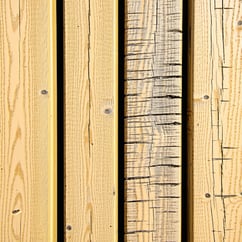Annual Deck Inspection Checklist: A Pro’s Guide to a Safer, Longer-Lasting Deck
In Minnesota, where decks endure snow, ice, rain, and sunshine (sometimes all in one week), regular inspection is key to maintaining both safety and longevity. Whether your deck is newly built or a decade old, an annual checkup can help you catch small issues before they become costly or dangerous.
This expert deck inspection guide covers everything you need to assess your deck’s structure, surfaces, and safety, so you can enjoy outdoor living with peace of mind.
Why Annual Deck Inspections Matter
Deck failures are more common than many homeowners realize—and often, they’re preventable. Regular inspections:
-
Help identify rot, corrosion, or structural weakness.
-
Ensure fasteners, footings, and railings are secure.
-
Catch wear and tear from Minnesota’s extreme climate.
-
Prolong the life of your investment.
Whether you're a DIY enthusiast or hiring a professional, following this checklist annually is the best way to keep your deck strong, secure, and safe for your family and guests.
🔍 Your Annual Deck Inspection Checklist
1. Start from the Ground Up: Footings & Posts
-
Check for soil erosion around footings or posts, especially after heavy spring rains.
-
Look for cracks or shifting in concrete footings.
-
Make sure posts are not directly buried in soil (unless they’re treated to resist rot).
-
Ensure there’s no pooling water near support areas.
Warning sign: Leaning or wobbly posts may indicate structural failure.
2. Inspect the Ledger Board Connection
The ledger board is where your deck connects to the house, and it’s a common failure point.
-
Ensure it’s tightly fastened with lag screws or bolts, not nails.
-
Check for signs of separation from the home.
-
Look for water damage, rot, or rusted flashing above the ledger.
Tip: Flashing should direct water away from the ledger board to prevent rot and mold.
3. Examine Deck Boards & Surface 
-
Scan for warped, splintering, or cracked boards.
-
Check for loose nails, screws, or popped fasteners.
-
Look for signs of mold, mildew, or rot, especially where boards meet.
-
Walk the entire surface to feel for soft spots or bouncing.
Maintenance tip: Replace damaged boards, sand rough spots, and reseal every 2–3 years.
4. Check Joists, Beams, and Framing
Crawl underneath your deck if possible and examine the support structure:
-
Inspect joists and beams for rot, sagging, or separation.
-
Look for signs of insect damage, particularly from carpenter ants or termites.
-
Ensure that all metal hangers and hardware are corrosion-free and securely fastened.
Cold-climate bonus: Freeze/thaw cycles can loosen connections—tighten them as needed each spring.
5. Evaluate Railings & Stairs
-
Shake the railings to ensure they’re solid and secure.
-
Measure rail height—Minnesota code typically requires 36" minimum for residential decks.
-
Ensure balusters are properly spaced (no more than 4" apart).
-
Check that stair treads are even, level, and not slippery.
-
Inspect stair stringers for cracks or looseness.
Pro tip: Add anti-slip tape or paint to prevent icy slips in winter.
6. Look for Rust, Corrosion, or Insect Damage
-
Inspect all fasteners, brackets, bolts, and connectors for rust or loosening.
-
Replace corroded hardware with galvanized or stainless steel to resist Minnesota moisture.
-
Check wood for tunneling or sawdust—a sign of insect infestation.
7. Assess the Overall Deck Safety
-
Does the deck sway when you walk on it?
-
Are there noticeable squeaks, bouncing, or shifting?
-
Is the deck level or starting to settle on one side?
If anything feels unsafe or structurally off, it’s time to call in a professional for a more thorough inspection.
8. Clean, Seal & Protect
Once your inspection is complete, give your deck a little TLC:
-
Power wash dirt, pollen, and mildew.
-
Re-stain or seal your deck every 2–3 years, especially if it receives full sun or harsh winter exposure.
-
Consider UV-protective stains to prevent graying.
When to Call a Pro
While homeowners can perform many of these checks themselves, it’s wise to schedule a professional deck inspection every few years, especially if:
-
Your deck is over 10 years old. 
-
You notice significant structural issues.
-
You plan to sell your home.
-
You're unsure about local building codes.
At Home Visions Carpentry, we offer comprehensive deck inspections and can guide you through repairs or upgrades to keep your space safe, functional, and beautiful for years to come.
Final Thoughts: A Safer Deck Starts with a Solid Routine
A well-maintained deck doesn’t just look good—it keeps your family and guests safe. By using this deck inspection guide annually, you can stay ahead of potential problems, reduce costly repairs, and extend the lifespan of your outdoor living space.